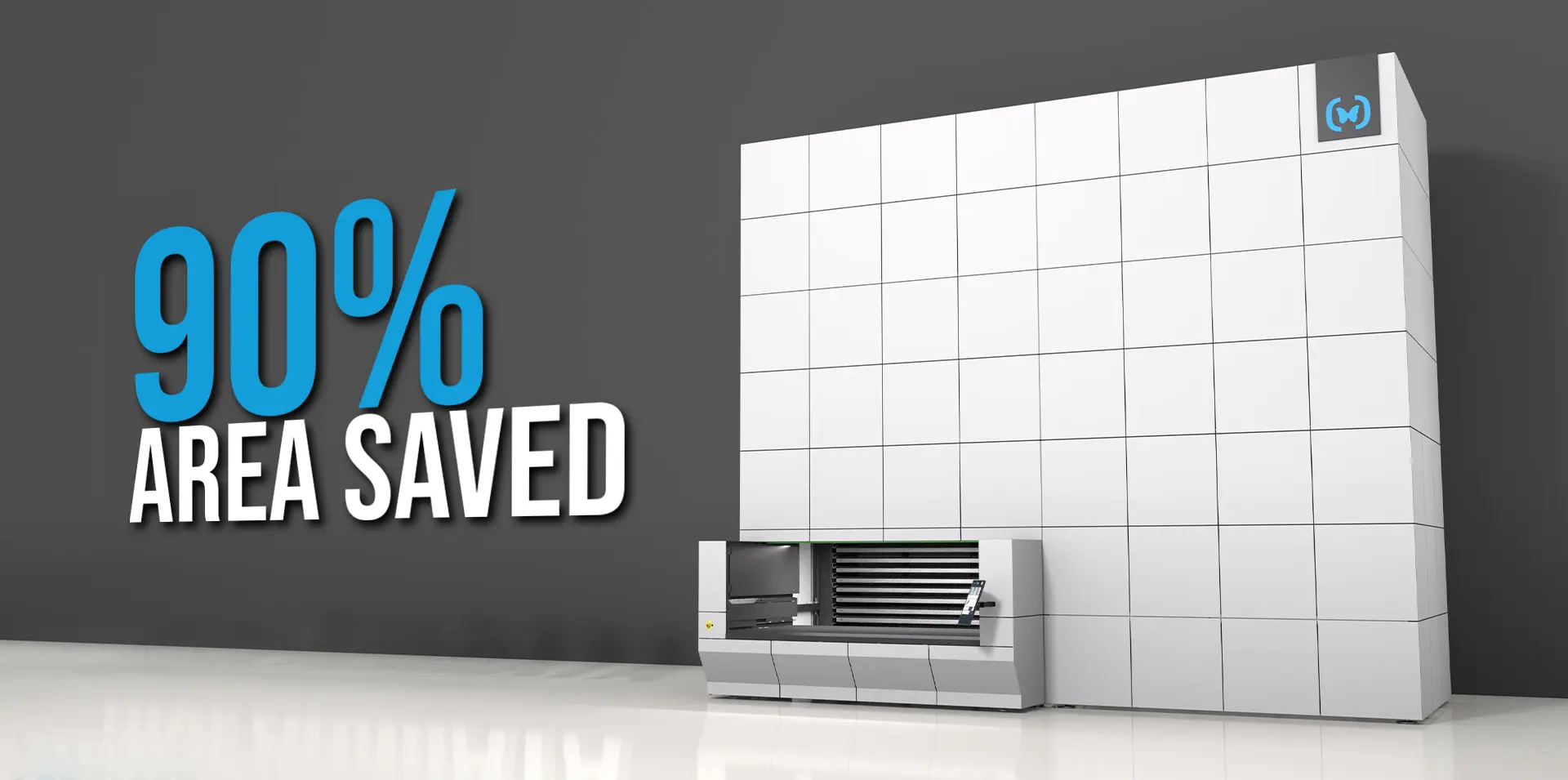+90% of surface area saved!
Today, many manufacturing companies still have a "traditional" management of their warehouse: bulky fixed ground shelves, several operators dedicated to the warehouse, use of expensive (and risky) lifting and handling equipment, enormous waste of time for the necessary movements of operators to retrieve goods from the shelves.

CHECK OUT THE GALLERY WITH EXAMPLES OF POSSIBLE CONFIGURATIONS OF ONO MODULES.
How much space waste does "manual" warehouse management entail?
Firstly, with standard shelves about 2 meters high, there is a huge waste of potential vertical space available. Alternatively, if shelves reaching the ceiling are adopted, which involve the use of machinery for lifting and handling, there is then the risk of accidents for both goods and operators, as well as high costs for managing the machinery itself. In any case, the vertical space between one shelf and another is fixed and not adaptable over time. Whereas with ONO's #TRUEMODULAR, the space between drawers is flexible and always optimized by the software, there is never wasted space between one drawer and another. Furthermore, the elimination of passage aisles for operators and dead safety spaces, as well as the possibility of using all available height meters in the warehouse without risk, guarantees an overall saving of about 90% of the normally occupied ground space.
90% Saved Ground Space and Increased Production Area.
Thanks to ONO Lean Logistics automatic vertical warehouses, the space that was previously dedicated to ground storage of goods can be used, for example, for production activities. So, as production increases, the impact of indirect fixed costs decreases, effectively using the same warehouse with the same square meters. Indirect costs have remained unchanged, but the now liberated surface has been converted into value-added activities.
A concrete example? In the event of a need to increase production, the company won't necessarily have to buy a new warehouse to obtain more space but can use an ONO modular system (which undoubtedly costs less than a warehouse) to optimize warehouse management, free up to 90% of ground space, recover the necessary surface for production, and ultimately maintain the same fixed costs. Not bad, right?
What other disadvantages does manual warehouse management entail? And what solutions does ONO Lean Logistics offer?
• TRADITIONAL WAREHOUSE - High warehouse personnel costs: with shelf warehouses, many operators dedicated to deposit and retrieval operations are needed. This results in many daily movements of the operators themselves with relative costs per man-hour and risk of accidents.
• WITH ONO - The need for only one operator for each system, even for large volumes stored. Less personnel movement towards the storage area. With ONO systems, it's the goods that are brought to the operator, not vice versa. A considerable saving of time is thus obtained, which can be used for other more useful and profitable purposes.
• TRADITIONAL WAREHOUSE - Risk of shortages and theft: goods are exposed on shelves without control and without protection against theft.
• WITH ONO - Every access to goods is monitored and authorized, down to the single drawer or product. Goods are stored in a closed environment that protects them from damage due to dust, heat, or weather.
• TRADITIONAL WAREHOUSE - Risk of goods damage: every manual operation managed by the operator carries the risk of material damage, falling from shelves, or operator injury.
• WITH ONO - Picking and deposit operations are monitored and managed in total safety by the machine, with safe movements and no jerks. The risks of personnel injury and goods damage are eliminated.
